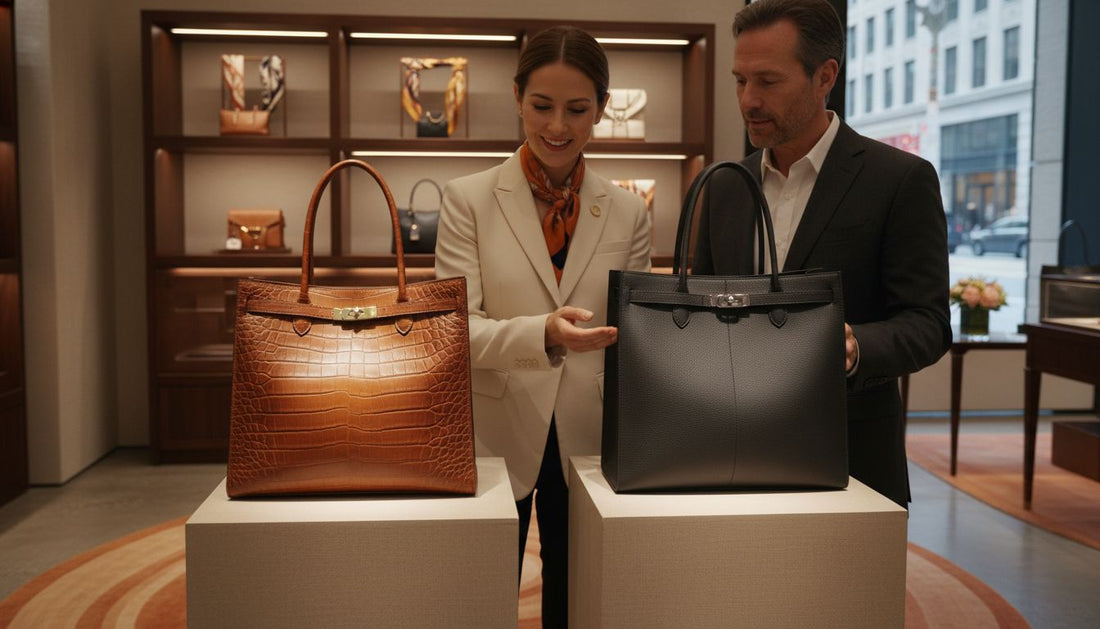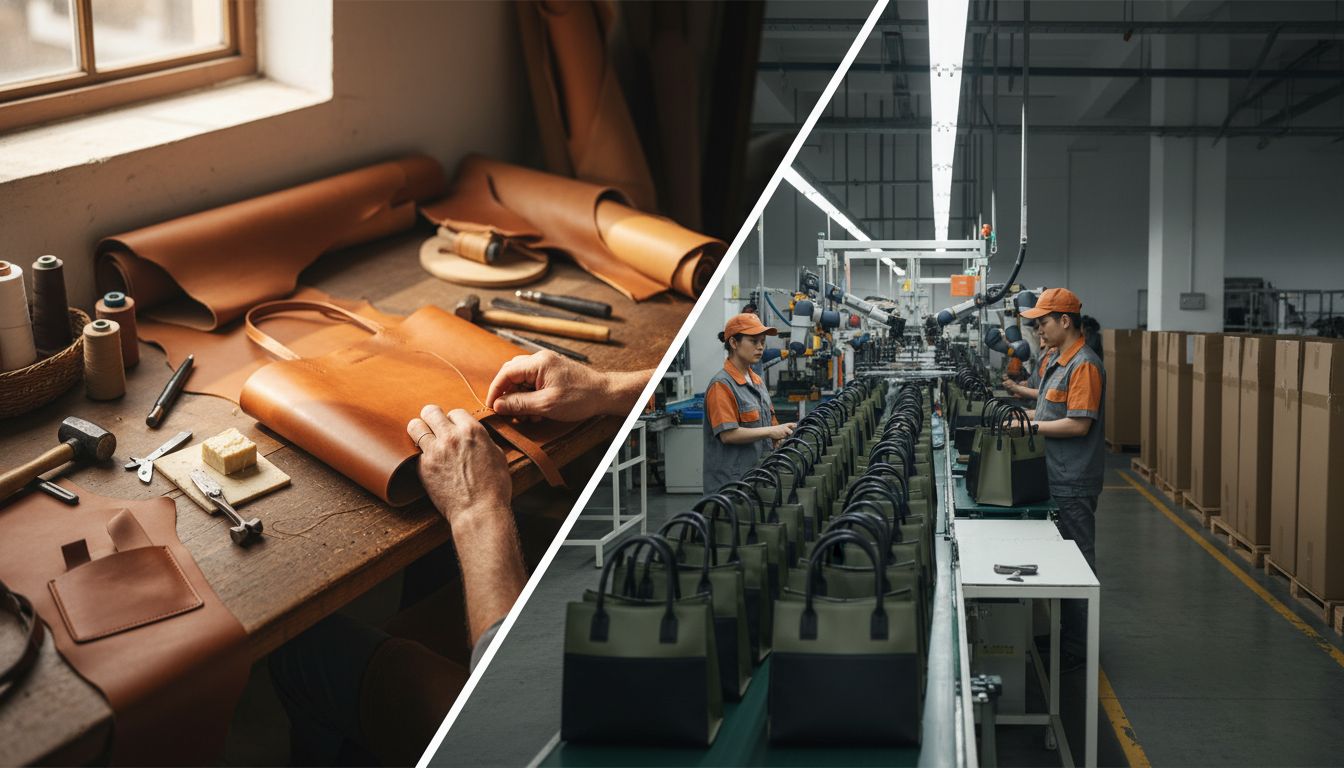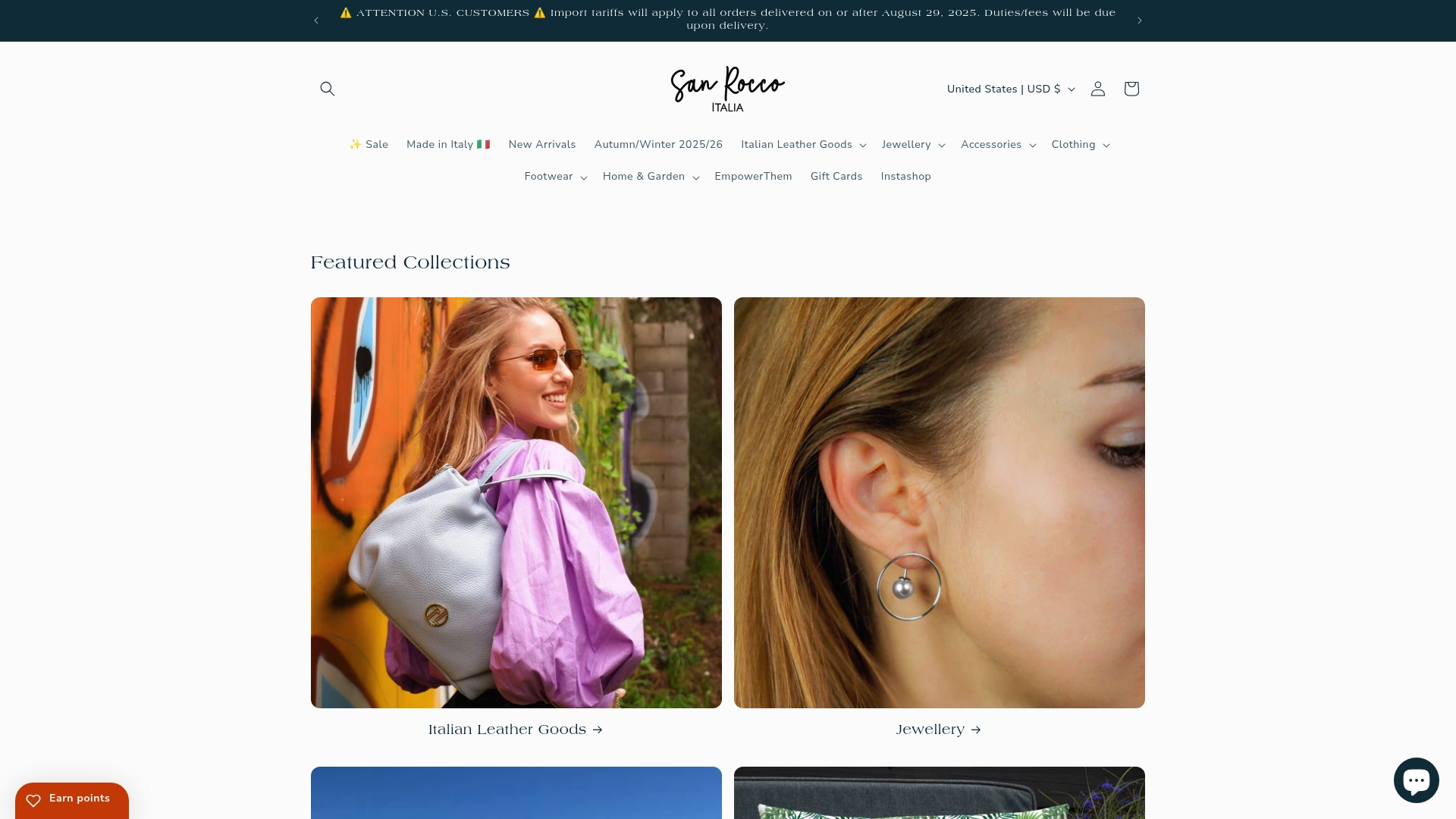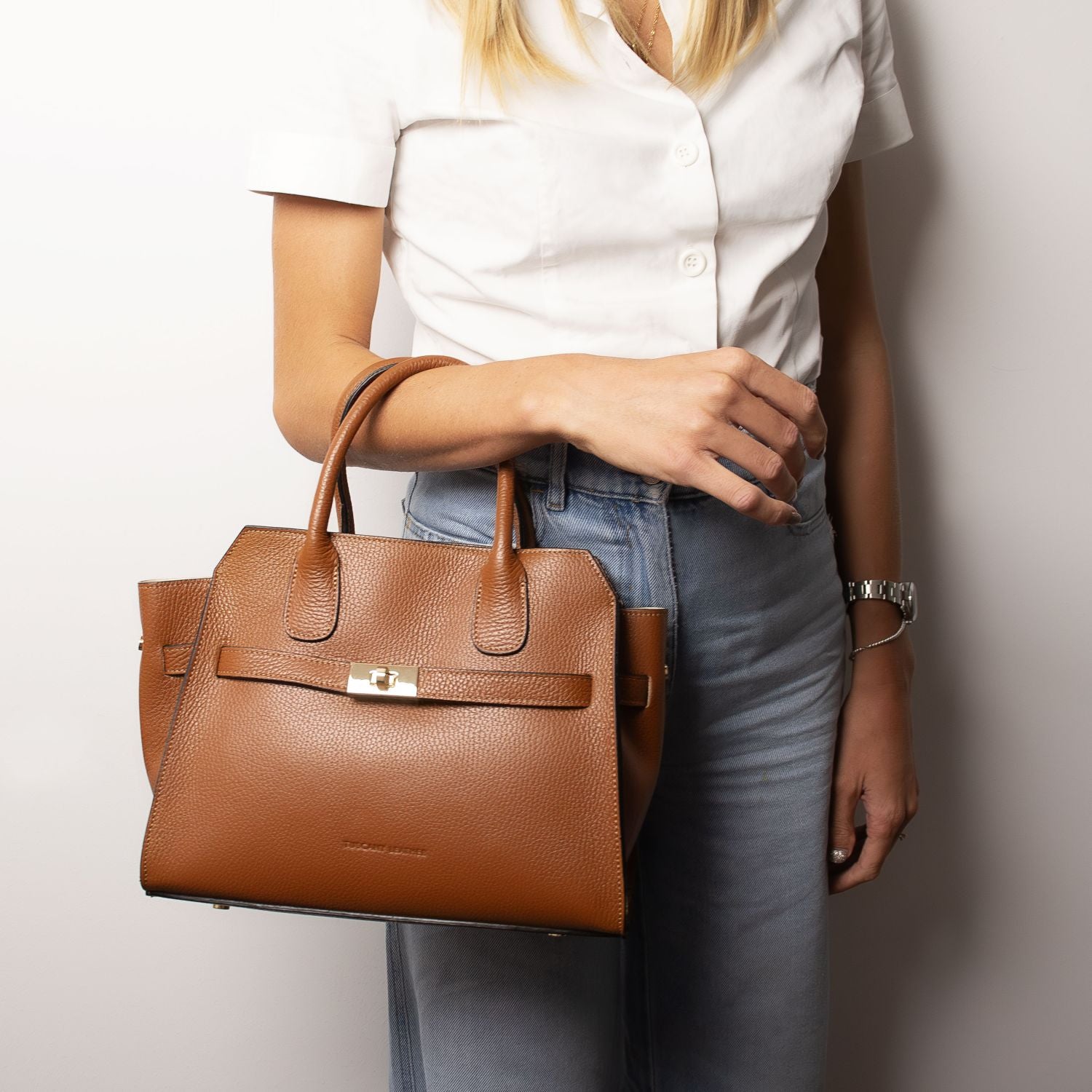
Luxury vs Mass-Produced Bags: Complete Comparison Guide
Share
Did you know that the luxury handbag market was valued at over $50 billion in 2023? The difference between luxury and mass-produced bags stretches far beyond price tags. For anyone passionate about fashion or quality, recognizing what sets a handcrafted Italian leather bag apart from a machine-made accessory opens up a world of meaningful choices and lasting value.
Table of Contents
- Defining Luxury And Mass-Produced Bags
- Types Of Bags: Artisanal Vs Industrial Production
- Key Features: Materials, Design, And Craftsmanship
- Cost, Value, And Long-Term Durability
- Ethics, Sustainability, And Buyer Considerations
Key Takeaways
| Point | Details |
|---|---|
| Luxury vs. Mass-Produced Bags | Luxury bags prioritize exceptional quality, craftsmanship, and exclusivity, whereas mass-produced bags focus on cost-efficiency and standardization. |
| Artisanal vs. Industrial Production | Artisanal methods emphasize manual craftsmanship and premium materials, contrasting with industrial production’s focus on speed and scalability. |
| Cost, Value, and Durability | Luxury bags represent a long-term investment with lasting value and durability, unlike mass-produced bags which are often disposable and less durable. |
| Ethics and Sustainability | Ethical luxury prioritizes sustainable sourcing, fair labor practices, and transparency in production, areas where mass-produced bags typically fall short. |
Defining Luxury and Mass-Produced Bags
When exploring the world of handbags, understanding the fundamental differences between luxury and mass-produced bags becomes crucial for discerning shoppers. According to research from PMC, luxury products are distinguished by several key characteristics: exceptional quality, high pricing, scarcity, aesthetic appeal, and a powerful brand heritage.
A luxury bag transcends mere functionality - it represents an investment in craftsmanship, design, and exclusivity. These bags are meticulously handcrafted using premium materials like full-grain Italian leather, often produced in limited quantities by skilled artisans who have perfected their techniques over generations. Each piece tells a unique story, reflecting the maker’s dedication to quality and tradition.
In contrast, mass-produced bags are manufactured in large quantities, prioritizing cost-efficiency over individual character. These bags are typically created using standardised processes, less expensive materials, and machine-driven production methods that sacrifice intricate details and long-term durability. While more affordable, they lack the nuanced artistry and personal touch found in luxury leather goods.
To truly appreciate the difference, consider these distinguishing factors:
- Craftsmanship: Handmade vs machine-assembled
- Materials: Premium full-grain leather vs synthetic alternatives
- Production Volume: Limited edition vs unlimited manufacturing
- Longevity: Designed to last decades vs seasonal trend-driven
For a deeper understanding of luxury handbag characteristics, explore our complete guide to luxury handbags.
Types of Bags: Artisanal vs Industrial Production
The landscape of bag production represents a fascinating intersection of tradition and technology. According to research from PMC, the luxury fashion industry encompasses both traditional artisanal methods and modern industrial production, reflecting a nuanced blend of heritage and innovation.
Artisanal bag production is a testament to time-honoured craftsmanship, where skilled leather workers meticulously create each piece by hand. These artisans often use techniques passed down through generations, focusing on intricate details, superior material selection, and personalised design. Each bag becomes a unique work of art, representing hours of dedicated manual labour and deep cultural expertise.
In stark contrast, industrial bag production prioritises efficiency, scalability, and cost-effectiveness. These manufacturing processes utilise advanced machinery and standardised techniques to produce large quantities of bags quickly. While industrial methods enable broader accessibility and more affordable pricing, they inherently sacrifice the individual character and meticulous attention to detail found in artisanal crafting.
Key differences between artisanal and industrial bag production include:
Here’s a structured comparison of artisanal and industrial bag production methods:
| Aspect | Artisanal Production | Industrial Production |
|---|---|---|
| Production Speed | Slow Hours/days |
Fast Minutes/seconds |
| Customisation | Highly personalised | Standardised designs |
| Material Quality | Premium, hand-selected | Cost-effective alternatives |
| Craftsmanship | Manual, skilled artisans | Machine-driven processes |
| Environmental Impact | Often more sustainable | Can have higher footprint |
| Output Volume | Limited quantities | Mass-market volumes |
- Production Speed: Hours/days vs minutes/seconds
- Customisation: Highly personalised vs standardised designs
- Material Quality: Carefully selected premium materials vs cost-effective alternatives
- Labour Intensity: Manual craftsmanship vs machine-driven processes
- Environmental Impact: Often more sustainable vs potentially higher carbon footprint
For deeper insights into the nuances of luxury bag production, explore our complete guide to luxury handbags.
Key Features: Materials, Design, and Craftsmanship
Understanding the distinguishing features of luxury bags requires a deep dive into three critical elements: materials, design, and craftsmanship. According to research from San Rocco Italia, luxury bags are distinguished by top-tier materials, artisanal craftsmanship, and signature design elements that reflect brand heritage.
Materials represent the foundation of a luxury bag’s quality. Premium full-grain Italian leather stands at the pinnacle of material selection, offering unparalleled durability, natural grain variations, and a rich patina that develops beautifully over time. Unlike mass-produced alternatives using synthetic materials, luxury bags prioritise exceptional raw materials that tell a tactile story of quality and refinement.
Design and craftsmanship elevate a bag from mere accessory to an artistic statement. Research from PMC highlights that luxury products are characterised by aesthetic appeal, exclusivity, and a strong brand image. Each luxury bag embodies meticulous attention to detail - from precision stitching and carefully aligned patterns to hand-finished edges and custom hardware that reflects generations of design expertise.
Key distinguishing features include:
- Material Selection: Full-grain leather vs synthetic alternatives
- Construction Technique: Hand-stitched vs machine-assembled
- Design Philosophy: Timeless elegance vs trend-driven styles
- Hardware Quality: Precision-crafted metal vs standard industrial components
- Finishing: Meticulously refined vs standardised production
For an in-depth exploration of Italian leather craftsmanship, discover our guide to understanding Italian handbag craftsmanship.
Cost, Value, and Long-Term Durability
When evaluating bags, understanding the intricate relationship between cost, value, and durability becomes paramount. According to research from PMC, luxury products are characterized by perceived excellent quality, high price, scarcity, and a strong brand image - factors that directly influence their long-term value proposition.
Luxury bags represent a strategic investment rather than a mere purchase. While the initial price point is significantly higher than mass-produced alternatives, these bags deliver extraordinary long-term value. Premium full-grain leather, superior craftsmanship, and timeless design ensure that a well-maintained luxury bag can last decades, potentially becoming a cherished heirloom that appreciates in both emotional and potential monetary value.
In contrast, mass-produced bags typically follow a disposable model, with lower upfront costs but substantially reduced durability. These bags are engineered for short-term use, constructed from less robust materials that deteriorate quickly. The seemingly economical initial price ultimately translates to repeated replacements, making them less cost-effective over time. Luxury bags, by comparison, offer remarkable durability - their high-quality materials and meticulous construction resist wear, maintain structural integrity, and age gracefully.
Key value considerations include:

- Initial Investment: Higher upfront cost vs recurring replacement expenses
- Material Longevity: Premium leather vs synthetic alternatives
- Repair and Maintenance: Often repairable vs typically discarded
- Potential Resale Value: Retains value vs immediate depreciation
- Aesthetic Preservation: Develops beautiful patina vs rapid aesthetic decline
To explore more about the intrinsic value of luxury handbags, delve into our complete guide to what makes a bag luxury.
Ethics, Sustainability, and Buyer Considerations
In the contemporary fashion landscape, ethical consumption has become increasingly paramount. According to recent research from PMC, digitalization in the luxury industry is enhancing sustainability efforts, allowing for better transparency and ethical practices that empower conscientious buyers to make informed decisions.
Sustainable luxury transcends mere product quality, encompassing holistic considerations about environmental impact, worker welfare, and long-term social responsibility. Luxury bag manufacturers committed to ethical production prioritise responsible sourcing of materials, fair labour practices, minimal environmental footprint, and transparent supply chains. This approach ensures that each handcrafted bag represents not just a fashion statement, but a commitment to global social and environmental well-being.
For discerning buyers, several critical ethical considerations emerge when selecting a luxury bag. These include understanding the provenance of leather, investigating manufacturing conditions, assessing the brand’s environmental commitments, and evaluating the potential for long-term use versus disposable fashion. Mass-produced bags often fall short in these areas, offering little insight into their production processes or environmental impact.
Key ethical buyer considerations include:
- Material Sourcing: Responsibly obtained leather vs potentially unethical procurement
- Labour Practices: Fair wages and working conditions vs potential exploitation
- Environmental Impact: Sustainable production vs high-waste manufacturing
- Transparency: Clear supply chain vs opaque production processes
- Longevity: Bags designed for decades of use vs disposable fashion
To deepen your understanding of ethical luxury, explore our complete guide to artisan leather craftsmanship.
Discover Timeless Luxury Crafted for You
Choosing between luxury and mass-produced bags can be overwhelming when you want more than just a handbag — you want a statement of quality, durability, and ethical craftsmanship. If you have faced the challenge of finding a bag that combines premium full-grain Italian leather, meticulous artisanal techniques, and lasting value, you are not alone. These qualities distinguish a true luxury bag from everyday alternatives and ensure your investment endures beautifully over time.
At San Rocco Italia, we understand your desire for exclusivity and sustainability. Our collection showcases carefully handcrafted bags made in Italy by skilled artisans dedicated to traditional methods. Each piece offers a unique story of craftsmanship and an opportunity to own something truly exceptional. Explore our boutique collection and experience how authentic design and ethical luxury can enhance your style and conscience. Visit San Rocco Italia today to start your journey.

Elevate your wardrobe with bags that reflect your values and appreciation for quality. Act now and browse our range of luxury handbags, all available with transparent craftsmanship and lasting beauty. Learn more about what makes a bag luxury in our insightful guides and choose pieces meant to accompany you for a lifetime. Begin your discovery at San Rocco Italia and embrace timeless elegance made just for you.
Frequently Asked Questions
What are the main differences between luxury and mass-produced bags?
Luxury bags are handcrafted using premium materials and are produced in limited quantities, resulting in unique designs and exceptional quality. In contrast, mass-produced bags are made using standardized processes with less expensive materials and are produced in large quantities, sacrificing individual character.
How do the materials used in luxury bags differ from those in mass-produced bags?
Luxury bags primarily use high-quality materials like full-grain Italian leather, known for durability and a unique patina over time. Mass-produced bags often use synthetic materials, which are typically less robust and not designed for long-term use.
What impact does craftsmanship have on the value of a bag?
The craftsmanship of a bag significantly affects its value. Luxury bags feature meticulous manual craftsmanship and attention to detail, resulting in durability and aesthetic appeal. Mass-produced bags often rely on machine-driven processes, leading to lower quality and shorter lifespans.
Are luxury bags more sustainable than mass-produced bags?
Luxury bags can be more sustainable, as many luxury brands prioritize ethical production, responsible sourcing of materials, and environmentally friendly practices. Mass-produced bags, on the other hand, may contribute to higher environmental footprints and often lack transparency in their production processes.
Recommended
- Complete Guide to What Makes a Bag Luxury – San Rocco Italia
- Luxury vs Designer Handbags: Complete Comparison Guide – San Rocco Italia
- Complete Guide to Luxury Handbags – San Rocco Italia
- What Makes a Handbag Luxury: Complete Guide – San Rocco Italia
- The Evolution of the Vintage Handbag
- Understanding Brand Differentiation in Luxury Markets - Corrado Manenti


